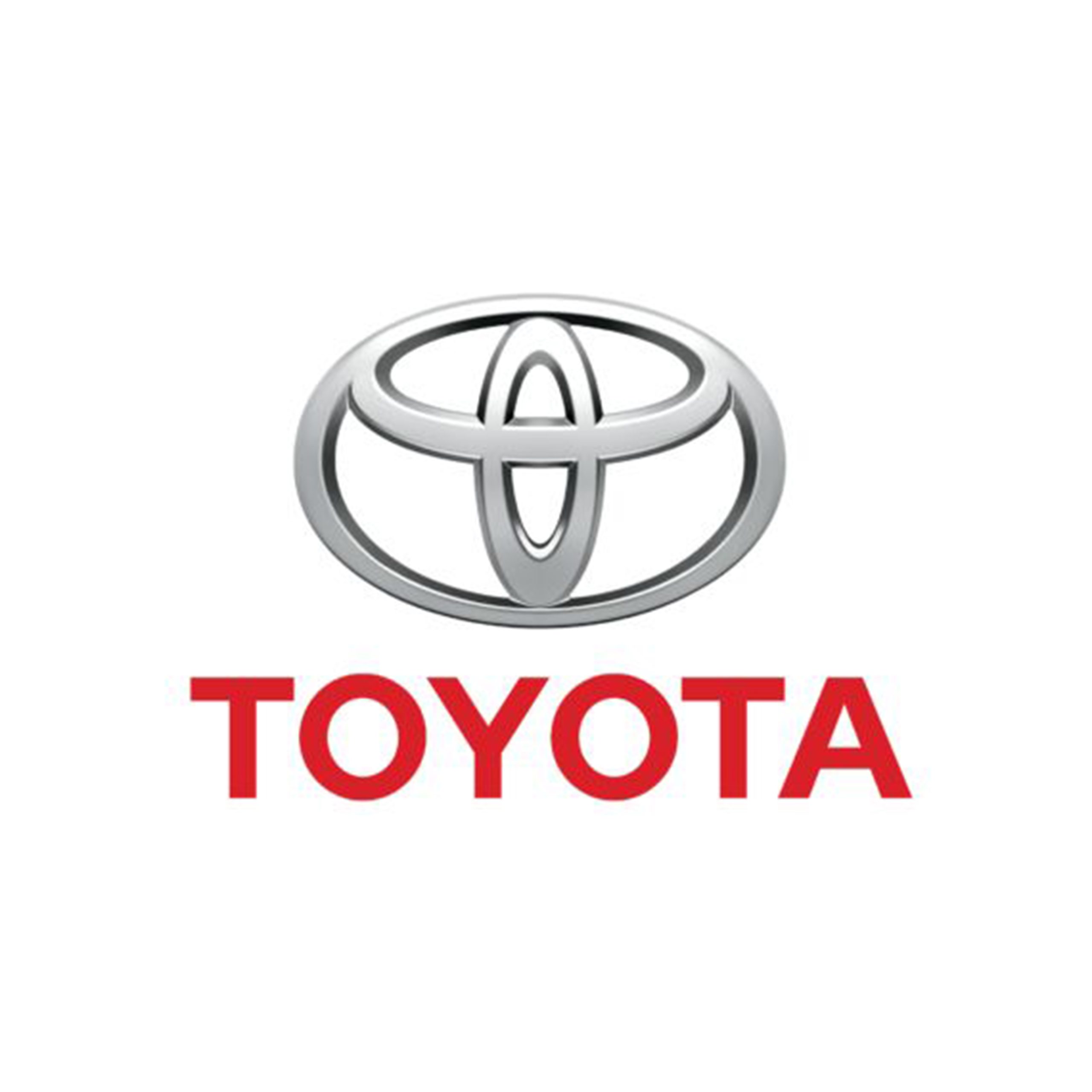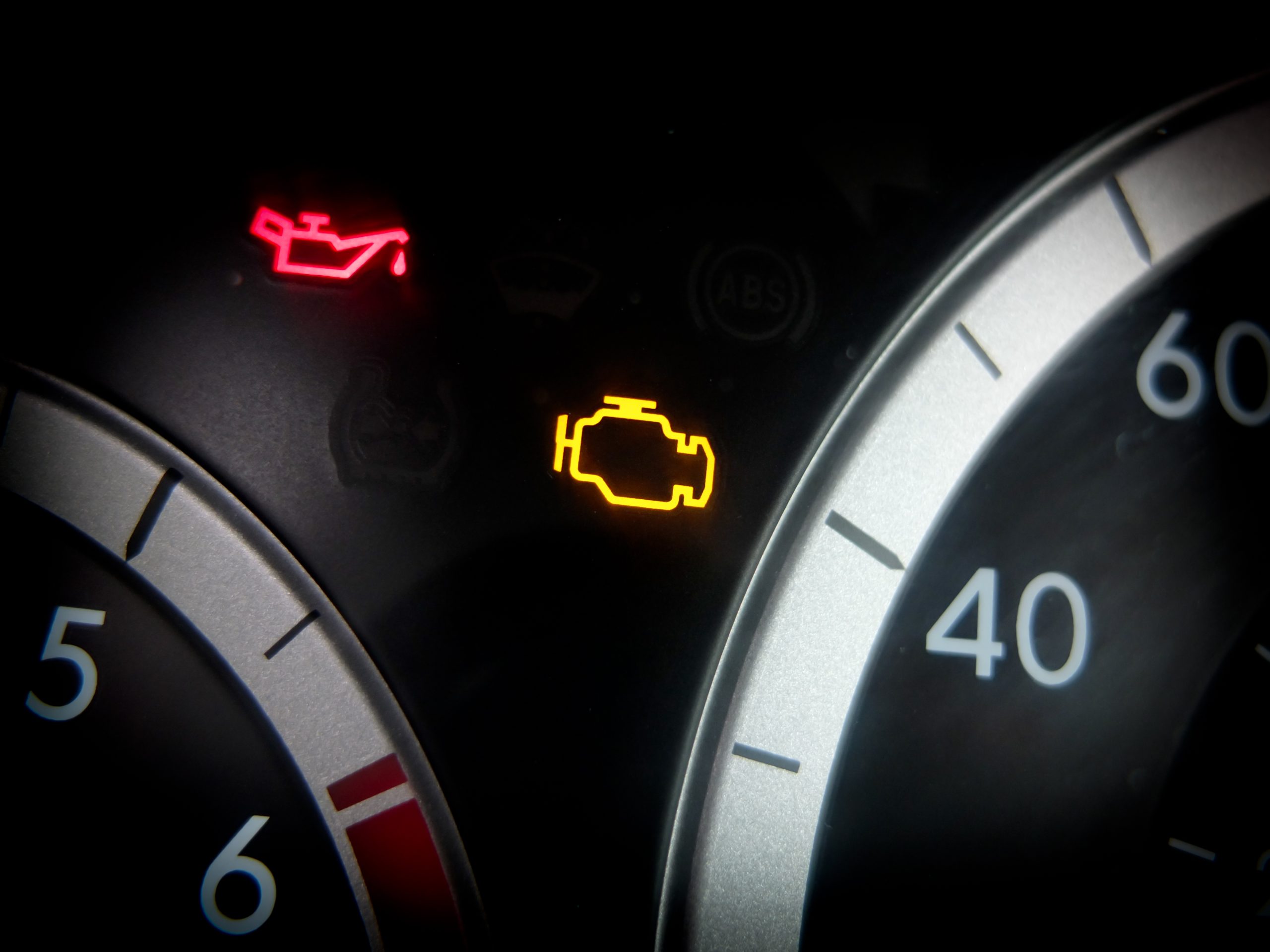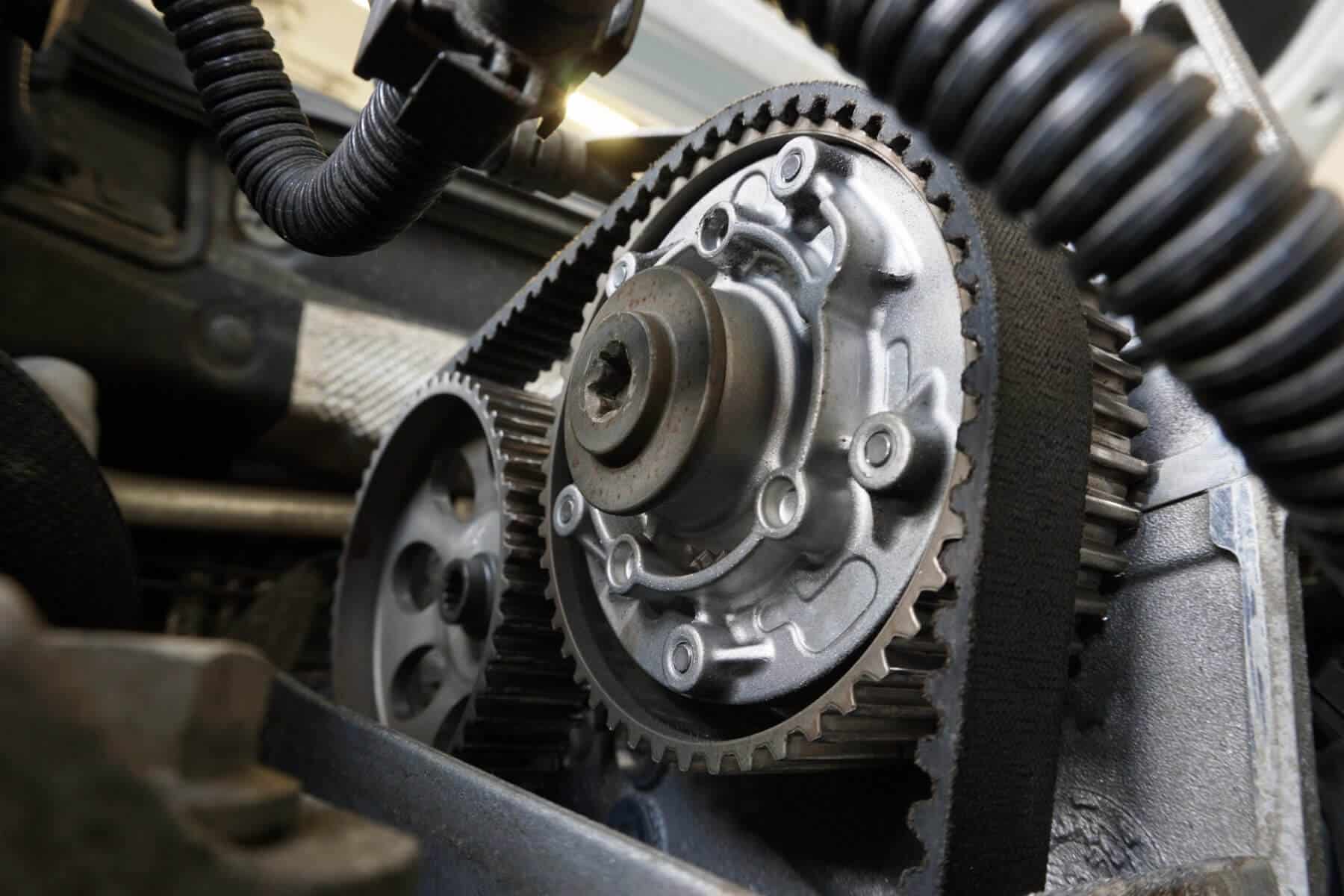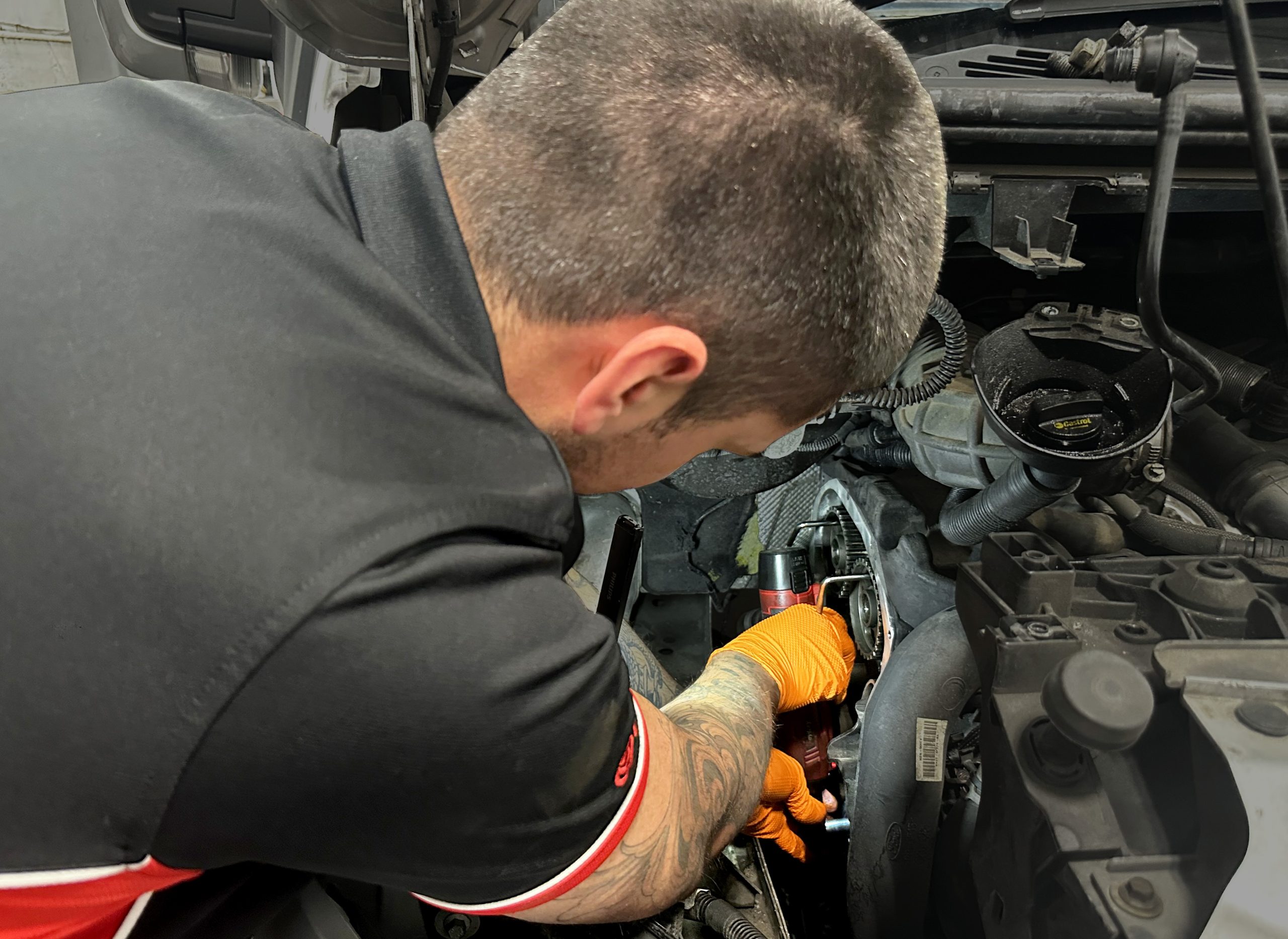WET BELTS
What is a wet belt?
A wet belt is a timing belt that operates inside a vehicle’s engine, submerged and lubricated by the engine’s oil, unlike a traditional “dry” timing belt which is exposed to the environment.
This internal, oil-lubricated design reduces friction and noise, improves fuel efficiency, and allows for a more compact engine design. Additionally, its job is to keep the engine’s moving parts, like the crankshaft and camshaft, working in perfect sync so the valves and pistons don’t collide.
It’s important that your wet belt is working and running properly because if the belt fails, the engine can suffer serious damage, often leading to very costly repairs. That’s why keeping up with oil changes and following the manufacturer’s maintenance schedule is key to keeping a wet belt in good condition.
Unfortunately, wet belts are subject to deterioration from engine oil, heat and contamination caused by the wet belt itself degrading over time. This can lead to rubber particles blocking the oil pickup pipe in the engine’s sump, starving the top of the engine of oil.
These risks make timely inspection and, where necessary, replacement by experienced technicians crucial to prevent the risk of costly repairs, or at worst, catastrophic engine failure.
Hillclimb Garage has the tooling and expertise to replace the wet belt and complete the cleaning and replacement of critical other components in the engine, such as the sump, oil pick up pipe and engine block filters. Beware of cheaper prices that do not include this additional, vital maintenance.
Or call us now on 01494 444481
What cars have wet belts?

Berlingo, C1, C3, C4, C5 Aircross, DS 3 Crossback, DS 7 Crossback

C-Max, EcoSport, Fiesta, Focus, Puma, Transit Connect, Transit Courier

208, 308, 3008, 5008, Partner, Rifter

Aygo, Proace

Corsa, Astra, Grandland X, Crossland X, Combo Van
Got a standard timing belt?

How do you know your wet belt needs replacing?
It is difficult to complete detailed examination of Wet Belts, due to their internal location in the engine. However, here are some warning signs you might notice if your wet belt is starting to fail. Catching them early can save you from bigger engine problems in the future and preventative maintenance can save you expensive repairs in the future.
- Low oil pressure: If the oilways become blocked by debris, the oil pressure will drop and performance will be affected. The oil light may also illuminate.
- Check engine light: The engine management light may come on if there is a problem with the wet belt.
- Noises: You might hear squealing, grinding, ticking or rattling noises coming from your engine. These are typically heard when starting the engine or accelerating.
- Engine performance: You may feel your vehicle is misfiring, performing irregularly at high speeds or running sluggish when idling.
- Oil leaks: Leaks around the wet belt (engine) area can indicate the belt is failing.
If you are experiencing just one of these symptoms, please get in touch with us as soon as possible and we will arrange an inspection of your vehicle. Like all things that can escalate if left, it is far better to get it checked out. One of our lovely, skilled technicians will assess the vehicle and advise the condition of the belt. Far better than leaving it, then the worst happens and you experience a broken or failed belt.
How long should my wet belt last?
Most manufacturer maintenance schedules state that wet belts are supposed to last around five years or 100,000 miles. However, experience has shown that, depending on the age of your vehicle and your driving habits, the lifetime of a wet belt can differ significantly to these guidelines and fail much earlier.
When should I change my wet belt?
We strongly endorse preventative maintenance as this investment in your vehicle provides peace of mind and prevents extremely costly repairs occurring if the belt fails, this can include a replacement engine.
Our advice is:
- Change your oil every year or every 10,000 miles, whichever comes first. Good discipline with maintaining one of your most important and costly investments is recommended, whatever car you drive.
- We recommend changing the wet belt no more than every five years or 50,000 miles, whichever comes the sooner.
Even with this maintenance and repair, we are often finding wet belts are failing even earlier, so do please ensure you bring your vehicle to us as soon as possible if you have any concerns over the wet belt condition or are experiencing any of the symptoms we have detailed above.
Call us for help and advice
Not sure if your car has either a wet belt or timing belt? Some cars are driven by timing chains, simply give us a call and we can advise.
Even if you just want to drop in for a chat or give one of our friendly Service Team a call to discuss your wet belt, please do not hesitate to do so. We are here to help and support you to ensure your vehicle gives you miles of happy motoring.




